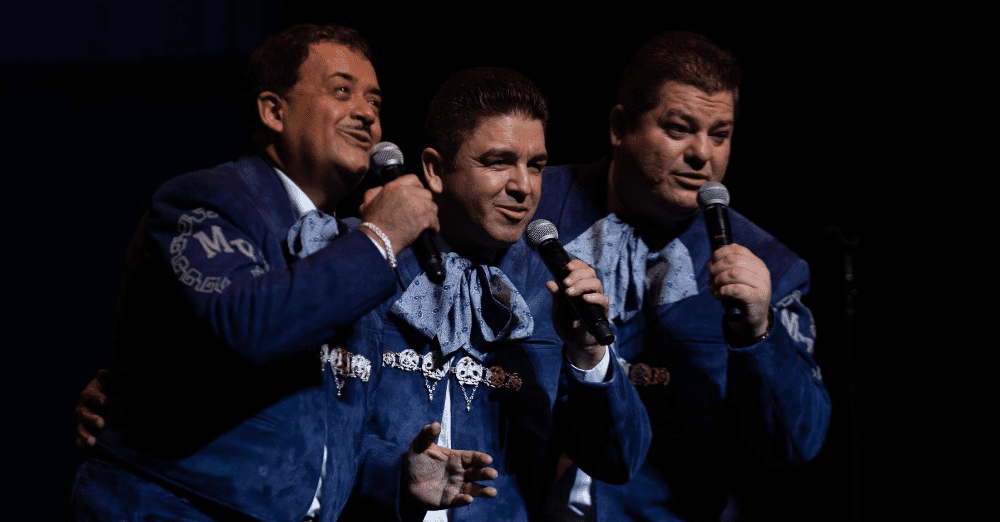Throughout the year, mariachimusic.com has released video recordings featuring exceptional performances from the 25th annual Mariachi Vargas Extravaganza. Many have been accompanied by blog articles posted on our website. Now, with the addition of our very first podcast, we’re including a third element to these videos and blogs.
In this initial episode, California-based mariachi documentarian Jonathan Clark speaks with Carlos Martínez — musical director of Mariachi Vargas de Tecalitlán — regarding the group’s much-anticipated video of “Sabes una Cosa-La Bikina.” Now you can enjoy watching Mariachi Vargas’ grand performance, listening to Carlos and Jon talk about this musical fusion, and reading — in both English and Spanish — valuable information from the interview transcripts.
Would you be interested in downloading the written music to this selection? If so, be sure to comment below, and we’ll do what we can to add a fourth element to these unforgettable performances and work toward getting you the materials you need for your group. Enjoy!
—Cynthia
Podcast No. 1
Interview recorded July 15, 2020
(intro music)
Spoken introduction
Welcome to mariachimusic.com’s very first podcast. In this initial episode, California-based interviewer Jonathan Clark speaks with Mariachi Vargas’ musical director Carlos Martínez regarding a video recorded in San Antonio last year (2019) during the Mariachi Vargas Extravaganza music festival.
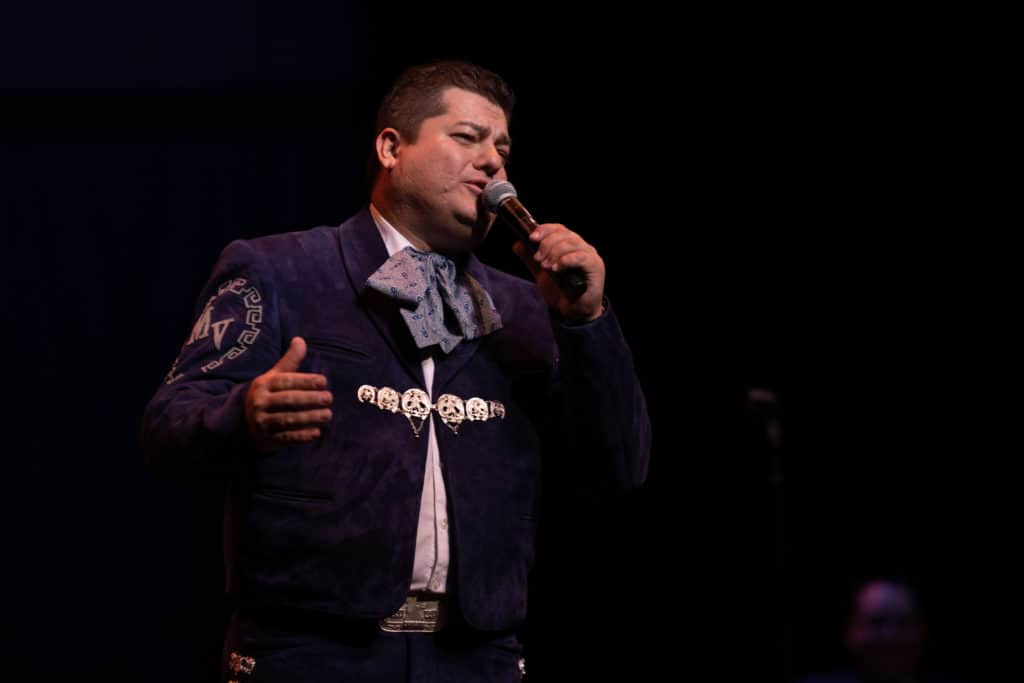
Q&A session with Carlos Martínez
JC: Carlos. I’m calling you on behalf of mariachimusic.com to ask you about two songs that Mariachi Vargas recorded last year in San Antonio.
CM: Sure. Of course.
JC: When was the first time Mariachi Vargas played “Sabes una Cosa” together with “La Bikina”?
CM: With these versions, it was last year.
JC: How did you come about pairing these two songs?
CM: I wanted to take two of Don Rubén Fuentes’ songs and play them back-to-back. At one point, we even went as far as to link up three of his songs: “Sabes una Cosa”, “La Bikina” and “Qué Bonita es mi Tierra”. But since we already play “Qué Bonita es mi Tierra” together with “Amo Esta Tierra,” we decided to leave that song out and just pair “Sabes una Cosa” with “La Bikina,” as a way of paying homage to Don Rubén.
JC: Was this your idea, or someone else’s?
CM: It was my idea. These are songs we always play anyway, so we wanted to perform them together. There’s also another combination that’s worked well for us. It’s a combination of “México en la Piel” and “El Viajero.” Both songs are about Mexico. Sometimes I like to combine songs two at a time, and the public responds to it.
JC: So you have several combinations like this?
CM: Exactly.
JC: Which are the others?
CM: “Amo Esta Tierra” and “Qué Bonita es mi Tierra”; also “México en la Piel” and “El Viajero”.
JC: Do you plan to record these on an album?
CM: No. Since the songs are already recorded individually, we only do these combinations in live performances.
JC: Could this be called a popurrí?
CM: No, we don’t call it a popurrí, because it’s just two songs. When I announce it in concerts, I don’t give it a formal title. I simply say: “We’re going to play two compositions by Maestro Rubén Fuentes. One of them is “Sabes una Cosa,” and the other is a well-known song that Luis Miguel went on to record: “La Bikina.” [Carlos sings the intro] And we’re off and running! So I just announce it to the public as two compositions by Maestro Rubén Fuentes.
JC: Okay. And if you were going to put this song combination on a printed program, would the title be “Sabes una Cosa-La Bikina,” or “Sabes una Cosa/La Bikina”?
CM: If I were to put it in a printed program, I’d probably write it as “Sabes una Cosa-La Bikina,” with a dash between the two song titles.
JC: So this was your idea to pay homage to Don Rubén?
CM: Yes. Since we play these songs in our shows anyway, I told the guys we should link them together as two compositions by Rubén Fuentes, since both are well-loved songs. Instead of cutting off the first song at its normal ending spot and having that space filled by applause, we play the two songs as a unit. It may last six or seven minutes, but that’s not a problem.
JC: That makes sense.
MC: The two songs blend together well. They’re in the same key and everything.
JC: The two are really compatible because there isn’t much contrast between them. They have the same rhythm, the same tempo, the same key….
CM: Exactly. That’s precisely why I paired them up, because they’re sister songs, in a manner of speaking. Whether it’s the similar rhythm or the fact that they’re by the same author, the combination feels very much in the style of Rubén Fuentes. Don’t you agree?
JC: Yes, the two definitely share an affinity. Have you changed the arrangements of either of these songs from the way they are on the original recordings?
CM: Yes, certain details. For example, with “Sabes una Cosa,” we try to play Don Rubén’s original arrangement. Regarding “La Bikina,” we play the Luis Miguel version because Robert sings it all the way through,1 but sometimes we make changes. For instance, when we want to play an instrumental version, we play Don Ruben’s original arrangement. It’s strictly instrumental, right? The only part anyone sings on is the chorus [Carlos sings “La Bikina tiene pena y dolor”], and the rest is instrumental. So you could say that we have two versions of that song in our repertoire, depending on what the performance calls for.
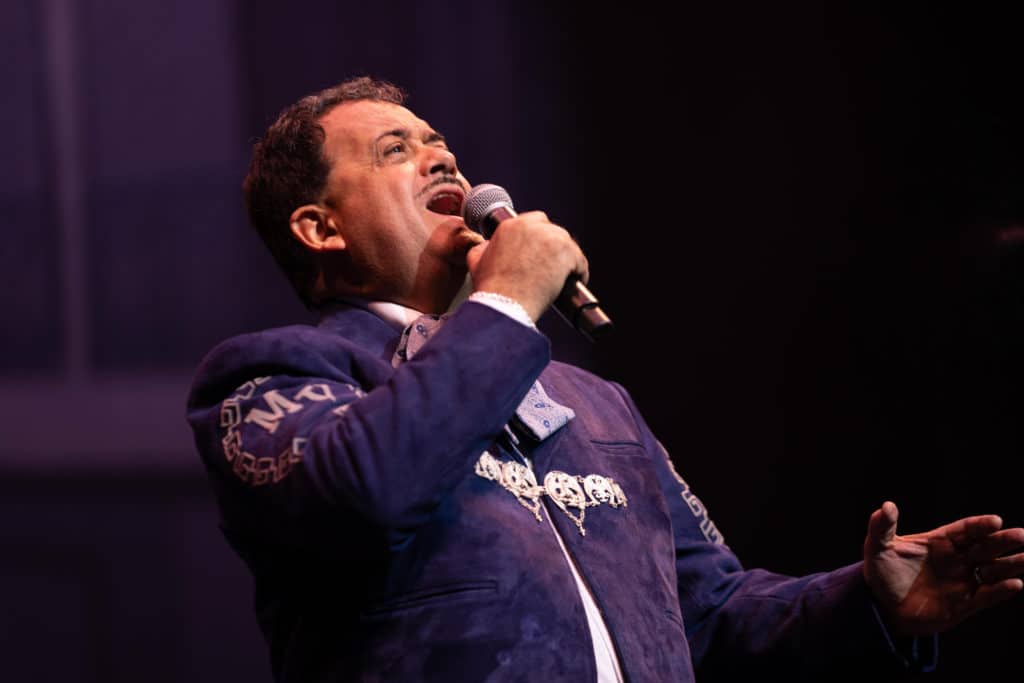
JC: In “Sabes una Cosa,” you form a trio with Daniel and Óscar.
CM: Yes, Daniel, Óscar and I.
JC: Why did you choose those particular vocalists for the trio?
CM: Well, I chose Daniel because he obviously sings throughout most of the song. Danny and I are the two main soloists, and I added Óscar on the high part because I like to have as many band members participate as possible. I think that song suits Óscar quite well. I especially like the way he phrases it. Of course, I know that if Arturo [Vargas] or Jonathan [Palomar] were to sing it, they would do an excellent job as well, but I like to distribute the vocal duties as much as possible. I really do like the way Óscar sings that part, though. It’s subtle, so when you get to the chorus, there’s a noticeable contrast. We do the trio, and after that, the chorus comes back in.
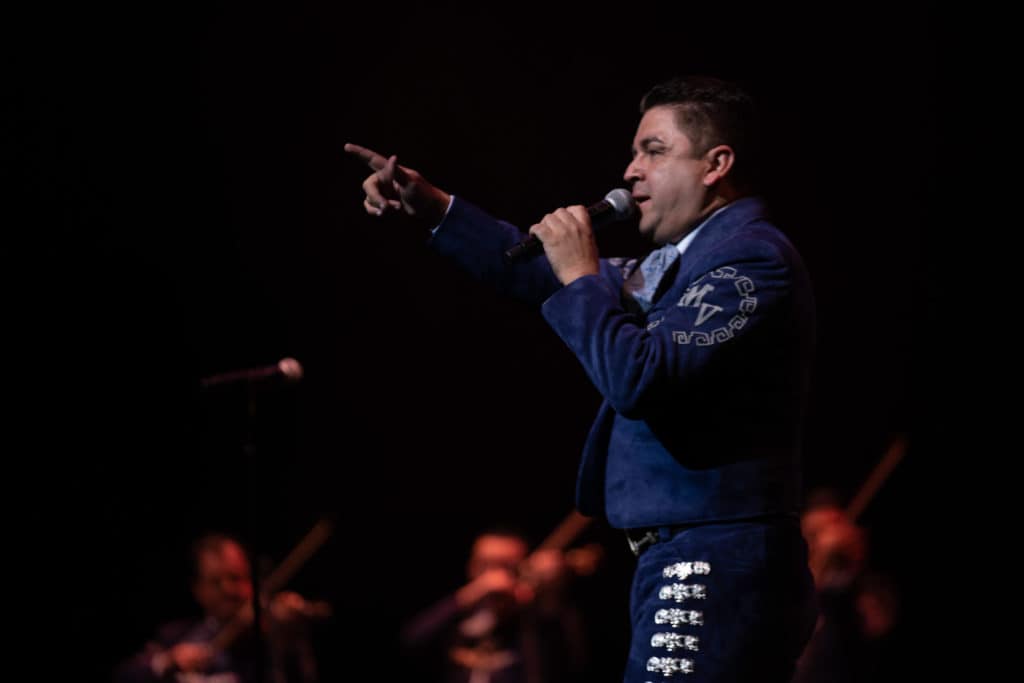
JC: How did you go about choosing Robert as the soloist for “La Bikina”?
CM: I first heard him sing that song in a rehearsal, while we were on tour with Luis Miguel. When I heard Robert sing it, I thought his voice was perfect for that song. He made it sound really attractive, his interpretation was good, he was in tune and his voice sounded youthful. I think his voice has the ideal youthful quality that Luis Miguel’s arrangement of this song needs.
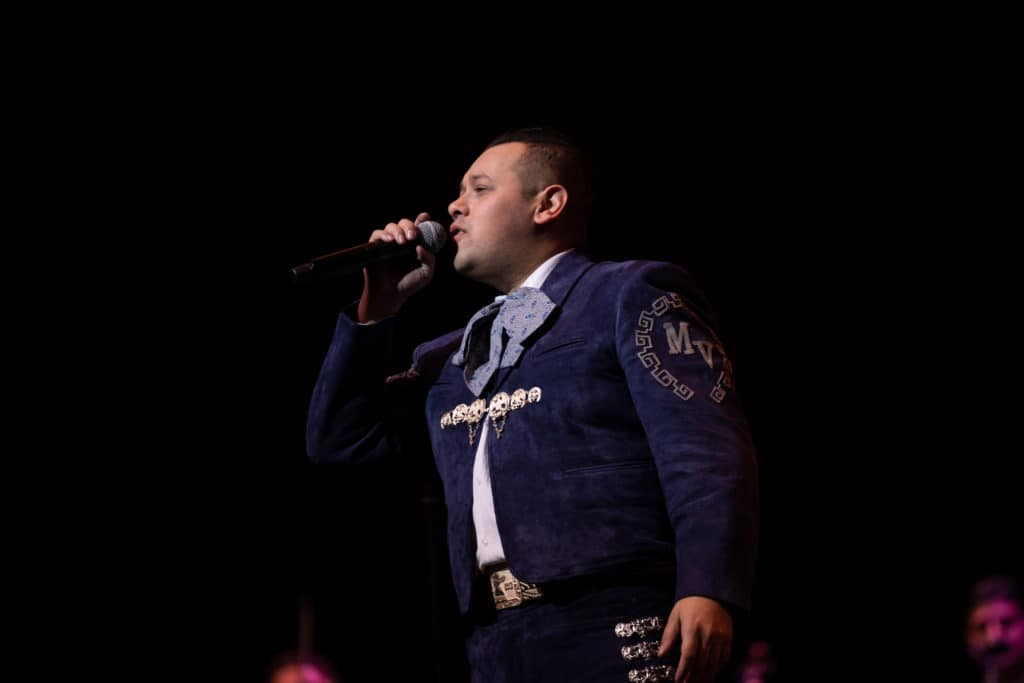
JC: Do you have any tips for all the mariachi directors and the arrangers out there? Is there any special technique or trick of the trade for merging songs in this manner?
CM: Well, one way would be to find two songs by the same author. Another would be to choose two songs with a similar theme. For example: hearts, hawks, bulls…. You need to have some justification for linking two songs together, don’t you think? So in this case, my justification was that both songs are by Rubén Fuentes. They’re both beautiful songs, and they’re sisters in terms of rhythm and key. What’s important is that you get a positive response from your audience when you perform a combination like this live. All I did was join the two songs together so they could be performed as one.
JC: In this case, you didn’t have to worry about a modulation or anything like that, or a bridge.
CM: No. Since they’re in the same key, there’s no necessity, although I could’ve modulated and then landed right back in the same key. You can do that, too. I mean, even if it’s in C, for example, I can momentarily go to another key center, pretending that I’ve modulated, but then go right back into the key of C. But I try to keep things more simple than that. On the occasions when I’ve spoken to Don Rubén about this, he’s always advised me to keep my transitions short, because if you don’t do this, your listener can easily become disoriented. So in the popurrís I’ve worked on with him, I’ve always tried to keep the interludes straightforward. His advice is: “Try to make your transitions pretty and simple, and always be sure they announce2 the song that’s coming up.” We’ve all heard transitions that have nothing to do with the musical material that follows, and the sensation is disconcerting. “What I don’t want you to do is stray too far outside the style,” says Don Rubén. So in this case, the two songs are almost back-to-back [Carlos sings] because that’s what the tonality lends itself to.
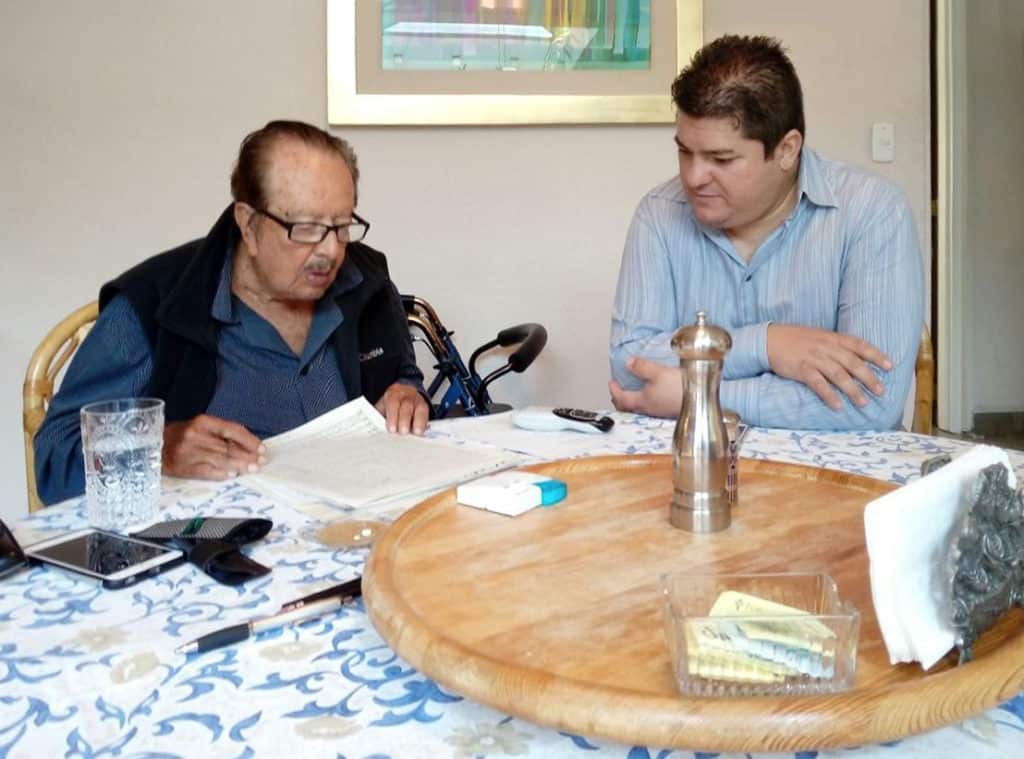
JC: That’s a good explanation, Carlos. So in this case, it’s not appropriate to add an interlude between the two songs.
CM: No, because… I know, for example, that we could do something like this: “¿Sabes una cosa?…” [Carlos sings]. But I feel like in that part people might say, “Hey, what’s going on? What happened there?” So I understand Don Rubén perfectly when he says: “Unless you first announce it…”. That’s really interesting, because if, for example, we announced it musically, we could do this part from “La Bikina” that’s coming into my head right now…[Carlos sings]. I could be singing the transition for “La Bikina”, right? [continues singing] And then I could start with “La Bikina” proper.
JC: Yes, that works.
CM: Maybe I could even mount it like that! (laughs)
JC: It would work, wouldn’t it?
CM: Yes, and I’m in the same key.
JC: That’s a good musical idea.
CM: Yes, I’m singing to you my very first occurrence of this idea, but I like it. I might even keep it like that! (laughs)
JC: It’s not bad, is it?
CM: And in a way it’s the same school of thought as Don Rubén, who says: “State the theme and keep it brief, so that you don’t distract the listener and go off on a tangent.
JC: Yes, that makes good sense.
CM: I’m going to record that right now, so I don’t forget it!
JC: Yes, by all means, record it. This is a perfect example of the creative process. Congratulations!
Well, thank you very much for the interview, Carlitos.
CM: If there’s anything I can ever do for you, Jonathan, don’t hesitate to call. Please say hello to Cynthia, Sandra and everyone in San Antonio.
JC: Will do. Thank you so much, Carlos!
(exit music)
1 The arrangement in question is by trumpeter/arranger/group leader Cutberto Pérez. It first appeared in the year 2000 on Luis Miguel’s CD and video titled Vivo, featuring Pérez and his group, Mariachi 2000.
2 The term announce, as used in this context, refers to a musical statement that introduces the upcoming song’s principal melody or motif.
Subscribe to the mariachimusic.com newsletter for updates on what’s happening in mariachi music, arts and culture. Be the first to learn about new videos posted from the Mariachi Vargas Extravaganza and relive outstanding performances. Read about the many people involved in promoting, preserving and performing the music that touches our hearts, feeds our souls and represents the very best of nuestra cultura.
The mariachimusic.com online newsletter is a monthly email blast that has now gone semi-weekly in an effort to provide the community with news, information and videos featuring great performances from numerous mariachi artists and previous participants of the Mariachi Vargas Extravaganza. Enjoy this content as you continue to keep your families safe and secure during this current Covid-19 outbreak. If you have stories you’d like to share about your experiences in mariachi music, and/or how you and your group are coping during this pandemic, please feel free to email them to cynthia@mariachimusic.com. Selected stories will be posted on the mariachimusic.com website in the blog section and shared via our email newsletters.
Content and videos shared through the mariachimusic.com online newsletter are made possible through the generous support of Mariachi Vargas Extravaganza sponsors Gonzaba Medical Group, H.E.B. and Valero Energy. Our thanks to these companies who invest in the Latino community and who are helping to keep our cultural traditions alive. Stay up to date with everything mariachi music-related by signing up for the mariachimusic.com newsletter at https://tinyurl.com/mariachimusicnewsletter!

